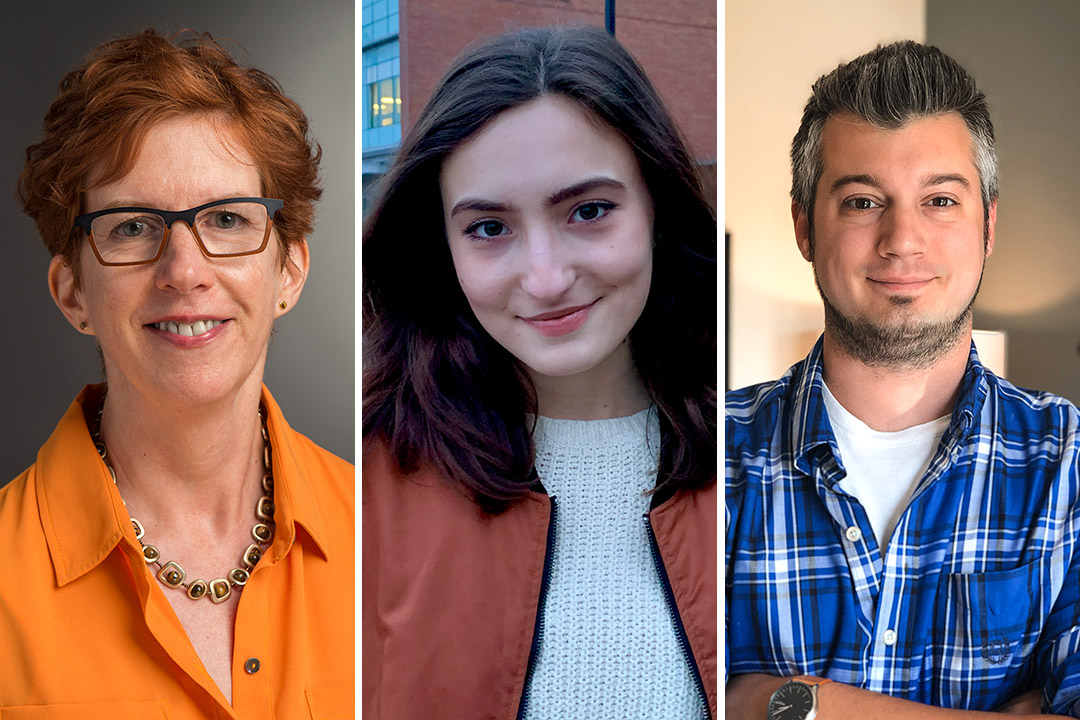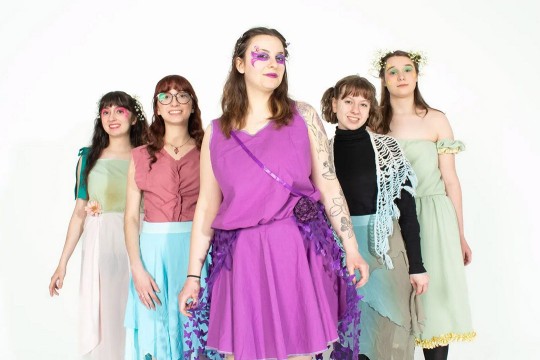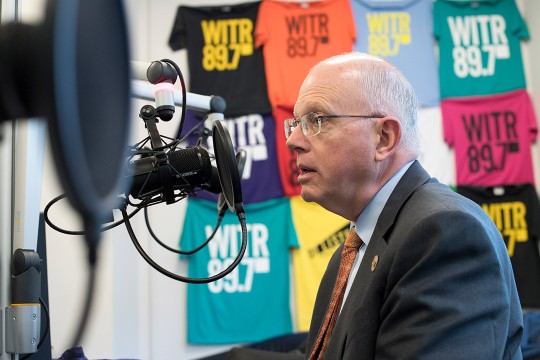Faculty member develops co-op experiences specific to supporting nonprofit companies
Additional feature of the new initiative is to engage local, professional mentors and alumni as part of the plan
A new option for co-op experiences at nonprofits is part of a pilot program being developed by a College of Art and Design Professor Susan Lakin, left. Gia Caruso, center, a third-year new media design student from Howell, N.J., was the first co-op in this pilot program. Caruso worked with Matt Olpinski ’12 (new media design), right, a web and mobile design consultant.
A new option for co-op experiences at nonprofits is part of a pilot program being developed by a College of Art and Design faculty member.
Susan Lakin, a professor in the College of Art and Design, said the aim of the program is to both fill a need at nonprofits for digitally fluent staff and to provide an important experience for students interested in working closely with community organizations.
“My interest is in using technology for the public good,” Lakin said. “While conducting research for a Public Interest Technology grant, I discovered how few nonprofits have any kind of digital strategy in place. Recognizing the serious implications of this problem, I knew we could find solutions at RIT through our strong co-op program. To me that was a natural fit.”
Nonprofits have special challenges—from over-stretched staffing, limited technology, to minimal funding for interns or co-ops. Staff in nonprofits have multiple responsibilities and the addition of a professional mentor from outside the nonprofit was a new angle.
“RIT provides students with a great education in technology and a co-op offers an opportunity for them to receive practical experience with employer mentorship, yet at a nonprofit an experienced mentor in their field of study is often missing,” said Lakin, who is also director of Frameless Labs.
Gia Caruso, a third-year new media design student from Howell, N.J., was the first co-op in this pilot program. Last summer and this fall, she worked at the Center for Teen Empowerment (CTE), a local organization based in Rochester’s Third Ward/Clarissa Street Neighborhood that helps develop peace, justice, and social equity policy initiatives to engage with public officials.
Caruso worked with Jennifer Bannister, CTE manager of development and collaborations, and Matt Olpinski ’12 (new media design), a web and mobile design consultant. She built a website for the center and also trained its teen youth history ambassadors to use Figma, a web design software.
“I was attracted to this co-op because it gave me the opportunity to do things that I had never done before—teaching youth about design and creating a custom-coded, Wordpress site,” she said. “I enjoyed the flexibility and free rein that I was given.”
During the co-op, Olpinski was available behind the scenes to build a new website and create a realistic execution strategy.
“As a mentor, I particularly enjoyed being available as a dedicated resource for Gia as needed,” said Olpinski.
He worked with her through virtual meetings and also recorded several videos answering technical questions about website development that could be replayed at her convenience.
“Gia was also highly motivated, which meant I was able to offer assistance when she needed it, rather than committing to a fixed schedule. I was also able to help her adjust expectations with the center throughout the summer so she could most effectively meet their goals and provide as much value as possible.”
Students like Caruso could see almost immediately the impact their work is having on the community the nonprofit serves. It was also a way to help them understand the collaboration skills needed in any kind of work setting, especially one that was a first professional and freelance experience.
“Since my contacts at the center weren’t designers or developers, it was hard for me to explain exactly what I was doing, what the process was, and where I was having difficulty,” said Caruso. “Having the opportunity to work with Matt was definitely a life saver, but I still was not prepared for the time commitment of the learning curve that I took on. Teaching and doing group work remotely was definitely a challenge.”
Lakin is proposing that the co-op experience align with the Public Interest Technology-University Network at RIT initiative. The university joined the national organization to further the use of technology for societal good, and this project is among several that tie technology and community improvements.
It’s important that our students are both proficient in technology and civic minded,” she said. “Having experience working with a nonprofit and seeing how technology can advance that nonprofit’s mission, makes for a more well-rounded student.”













